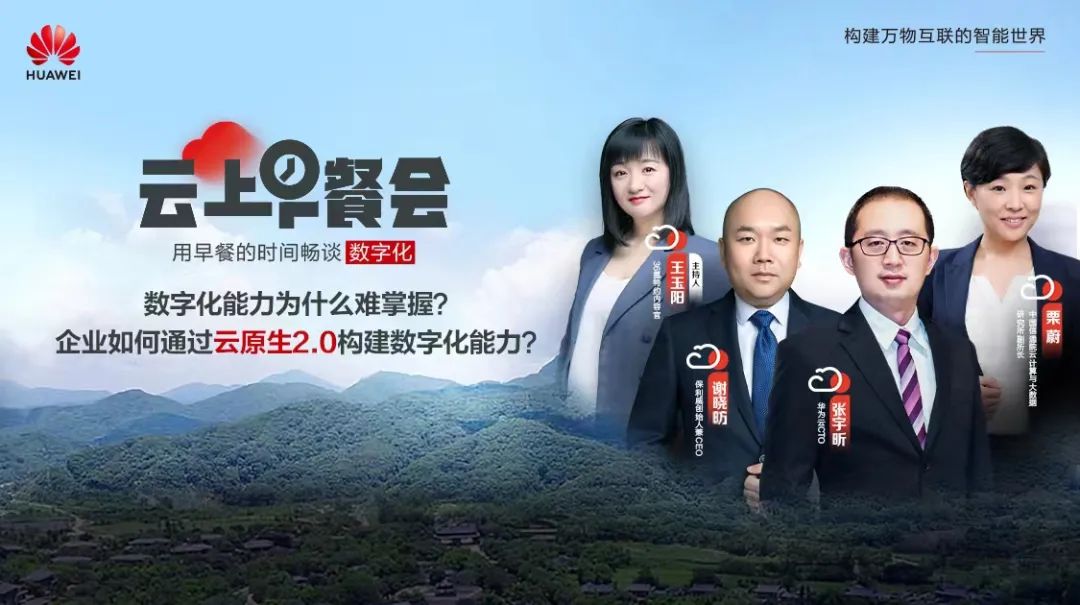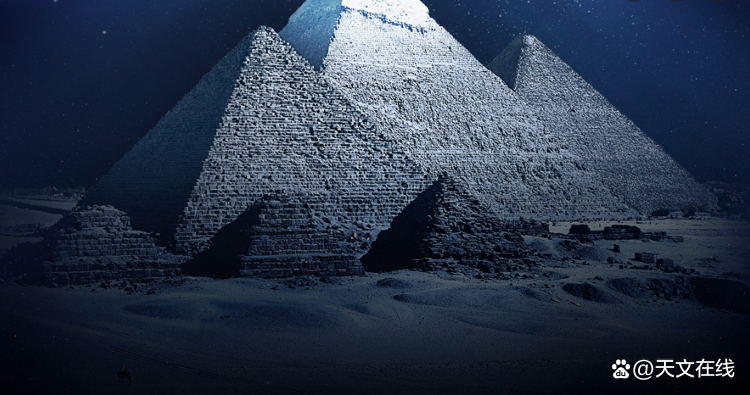Discretion and reconstruction, how does Yunyuan release the digital productivity of enterprises?
Author:36 氪 Time:2022.08.05

The goal or purpose of digital transformation of enterprises is to achieve large -scale personalized service capabilities with the lowest cost.

"Digitalization is the reconstruction of enterprise organizations, talents, product structures, and production methods. For software tools that match business and technology and support this change, they are also using cloud native reconstruction. They are unique."
Through digitalization, low -cost and efficient finding and meeting the personalized needs of each customer are the goals pursued by the company.
According to the different sizes of different units, design custom furniture in the living room, restaurant, kitchen and other rooms, and send them to the factory to be decomposed into different modules and BOM lists, coordinate the production lines and various plates, components, etc., and quickly produce production. Products, and ensure that each piece of furniture does not produce waste. Similar to this flexible agile production line and supply chain from demand to the production of final products is the pursuit of many manufacturing companies.
On the platforms such as Xiaohongshu and Douyin, various types of content plant grass, and find the needs of different types of consumers. Through the main types By. It is hoped that it is the goal of many fast consumer goods companies like the vitality forest with consumers, understanding, and continuous operation.
However, there are not many companies that can really achieve or have such digitalization. According to the "2021 Chinese Enterprise Digital Transformation Index Research" launched by Essenzhe and the National Industrial Information Security Development Research Center, the proportion of enterprises with a significant digital transformation effect in my country in 2021 only accounts for only the proportion of companies with a significant effect of digital transformation effects. It is 16%.
So why is it difficult to master digitalization capabilities, why is it required to build a digital ability of enterprises, which requires Yunxian 2.0, and what can Yun native to help enterprises build digitalization? Recently, at the cloud native breakfast meeting produced by Huawei Cloud and 36 氪, Huawei Cloud CTO Zhang Yuxin, Li Wei, deputy director of the Institute of Cloud Computing and Big Data of China Institute of Xinong CEO Xie Xiaoyu discussed these topics.

Under the change, the digitalization of the enterprise is deconstruction and reconstruction
"Digital transformation of enterprises, it is a series of changes in organizational capabilities and production methods from technological innovation. It involves a wide range of faces and is difficult."

Faced with fast demand changes and fierce market competition, the benefits of digitalization are required, whether it is reduction of costs and increased efficiency, or increasing income, they must be able to provide personalized services that meet the needs of user needs quickly and efficiently. Still customized customization is the key goal of digitalization of enterprises.
But to this day, Poly's cognition of digitalization of enterprises has been constantly adjusting, Xie Xiaoyu bluntly. In the future digital world, every company is a software company. As a company that provides video SaaS services, Pauli is a software company. I thought that digitalization should be very easy. However, with the continuous development of the business, it is actually the most basic element that the software layer is found to be found in the process of exploring the practice. After the product architecture and production architecture are adjusted, the organization needs to be adjusted. At each stage of the company's growth process, it is difficult and confused. To truly become a digital enterprise, it is still a long way to go.
Regardless of whether it is a traditional enterprise or a software company, Li Wei believes that digitalization is facing problems including product architecture, production methods, organizations, and talents. Talent architectures have changed.
In a survey on the difficult ranking of the digital transformation of the enterprise, the number one was new technology. Zhang Yuxin said that it would be at least three years in the company's acquisition of new technologies and the ability to integrate it into the production system. At present, the digital transformation of enterprises is a series of changes in organizational ability and production methods from technological innovation, which involves a wide range of aspects, including changes in thinking consciousness. It is understood that Su Bingtian, a sprint of Guangzhou, China, raised the 100 -meter sprint score from 10 seconds to 9 seconds 83, which adjusted the position of the left and right feet. This completely changed the original mature technical movement, which is a very big challenge for athletes who have reached such a high degree, but the use of new training methods quickly helped them break the Asian men's 100 -meter record. The same is true of corporate digitalization. It is a new core ability to build a new environment.
From 1.0 to 2.0, Yun natively releases new productivity

"Digital ability and Yunyuan seemed to be irrelevant from the text. If you put aside the literally, it is exactly the same from the concept to the ideas, from architecture to goals."
It is Yunyuan in the concept to architecture from concept to architecture. Li Wei believes that although Yun's native is a technical architecture concept, the digital ability of enterprise transformation needs to be achieved through software -based tools, which is to match business and technology. of.

In the context of fierce global competition and uncertain epidemic, enterprises need to maintain a high -speed iteration and continuous innovation ability to maintain competitiveness in different environments. From the organizational structure of the enterprise to the culture, to the technical architecture, the requirements are distributed, highly agile, and renewable. Cloud native is also distributed, loose coupling and high toughness. It can be seen that the connotation is completely consistent.
"Digitalization of enterprises requires new technologies, new technology releases new productive forces, which has spawned or reshaped new production relations or production models and methods."
In the era of Yunyun 1.0, Huawei Cloud only carried out the product services of infrastructure and the containerization. During the Yunnian 2.0 stage, the broader full -stack technology of the full scene was included in the Yun native service, supporting enterprises for digital transformation of digital transformation From infrastructure, service to technology, technology, and experience. Among them, Huawei Cloud's technology is that there are four production lines, including software development and production lines, data governance production lines, AI development and production lines, and digital content production lines. Zhang Yuxin introduced that these four production lines are the integration of technology into a series of complete solutions to help enterprises reduce the difficulty and threshold of new technology applications, and use the new production line to change the company's production methods. It can use the lowest cost and the highest efficiency to meet the diverse of customers. The demand forization, thereby enhancing the digitalization capacity of the enterprise.
It changes the software production method, that is, separate design, development, delivery, etc., upgrade from the waterfall model to the DEVOPS method, to achieve integration and iterate rapidly. The development team can directly communicate with customers to obtain demand and data generated from the software operation process to understand the customer's application status.
This change has also extended to more places. Zhang Yuxin's examples, the digital transformation of the enterprise hopes to use the ability of artificial intelligence, but the industry is different, different, and different. Each time you must establish a platform, obtain data, and train the model It can not be promoted on a large scale. Therefore, Huawei Cloud launched its own Pangu model and the Modelrts one -stop AI development platform, which helped companies solve the process of establishing from 0 to 1 at each time, changed customer application production methods and improved efficiency.
Regarding the relationship between digitalization and cloud native, Xie Xiaoyu believes that from the perspective of Pauli's practice, many digital work of the enterprise is essentially to do Yun's bleeding, especially the deconstruction and reconstruction of architecture. Because Polywell's application of the Yuan universe is relatively new, customer demand has changed a lot, and the software development model should be fast and the system must be stable. Only by isolation through microservices can it ensure that the development cycle and development frequency are guaranteed. The ability to respond to demand.
Under the joint effort of business and technology, help better digital business practice

"The goal or purpose of the digital transformation of enterprises is to achieve large -scale personalized service capabilities with the lowest cost. It produces digitalization capacity. Its overall IT architecture is also completely lingering."
To build this personalized service capability, the digital ability of the enterprise is the foundation. Therefore, the overall IT architecture of the enterprise must also be completely vertical, and digitalization must also be a full -volume element. However, Xie Xiaoyu believes that digitalization and Yun's native will not happen overnight, and they need to continue to evolve. Pauli has established a special digital team to connect the modules within the enterprise to connect the data, then decompose the system, and use the working mode of the departmental organization and the employee.

Regarding this situation, Zhang Yuxin believes that, first of all, the enterprise must deeply understand the cloud. It is not a simple resource level, but a cloud native to the whole scene and the whole scene of the whole stack. Secondly, in terms of application architecture, it is necessary to meet the native cloud conditions, that is, distributed architecture, micro -service, etc., deconstruct the application of decoupled coupling, low coupling between the application unit, and the high internal agglomeration within the application unit; Data lakes in native technologies help companies carry out end -to -end data management.
Therefore, digital transformation needs to integrate business with technology, and enterprises need to understand both business and technology.Li Wei believes that from the platform provided by IT technology and applications to digital practice that meets business needs, there must be digital methodology.In fact, the digitalization of enterprises also requires a complete ecology to provide different services.Zhang Yuxin believes that there are pioneer companies like Poly in the industry that are constantly developing digital explorations; there are platform service providers such as Huawei Cloud provide digital transformation capabilities to provide a platform for supporting customers to digital transformation;The institutions are trapped, formulated industry standards and digital maturity models, so that the industry forms a joint force, and the success rate of the digital upgrades of enterprises as a whole.
At present, the digitalization of enterprises and the clouds have entered the deep water zone. Only by incorporating the native thoughts, technology, and formation of formation into the digital transformation of the enterprise can we better promote the digital upgrade of thousands of industries.



- END -
Curious, is there any alien cultural relics on the earth?If so, what is it?

Has an alien person visited the earth? If so, have they left traces? Today we will...
rare!Tsinghua has a new discovery in the universe

Leed by Professor Zhu Wei from the Department of Astronomy of Tsinghua UniversityI...